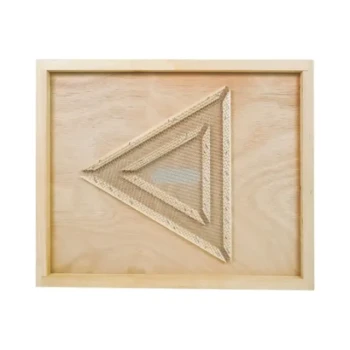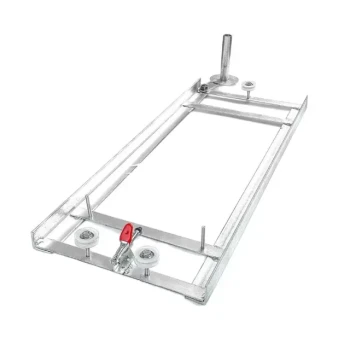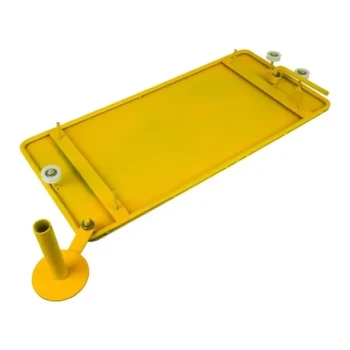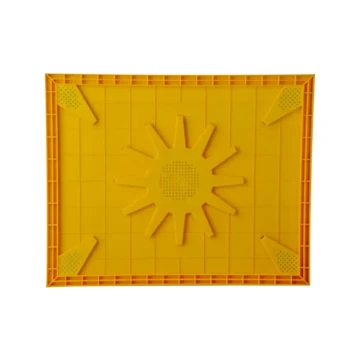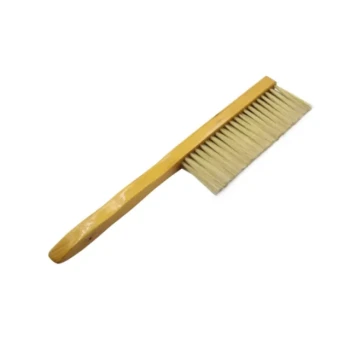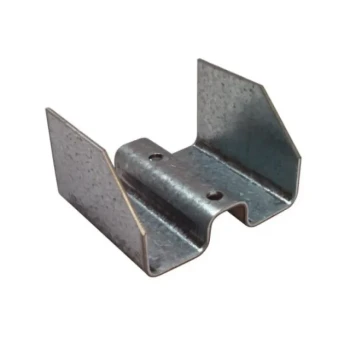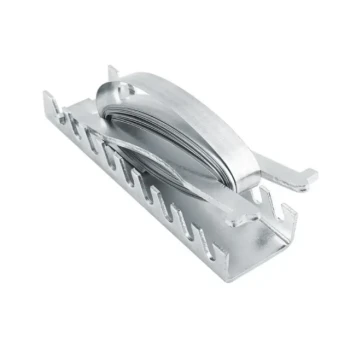In addition to the screen itself, an Integrated Pest Management (IPM) screened bottom board package typically includes a grid Corex debris board and an entrance reducer. These components are not merely accessories; they are essential tools that transform the bottom board from a simple ventilation device into a multi-function hive management system.
The additional components of an IPM bottom board provide the beekeeper with direct control over ventilation, pest monitoring, and hive security, allowing you to adapt the hive's environment to changing seasons and colony needs.
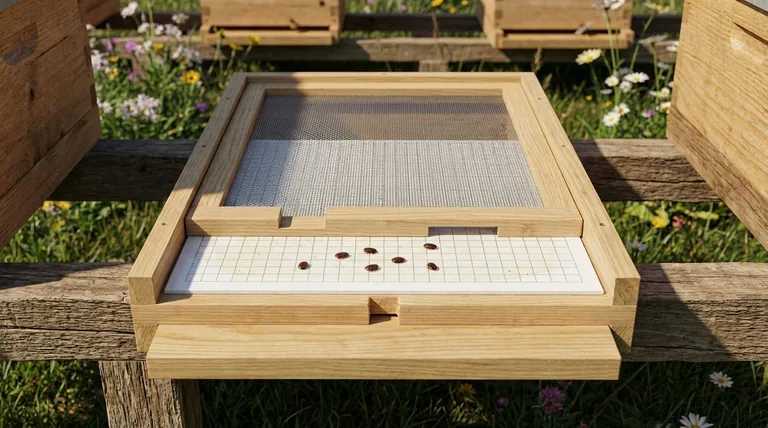
The Core Function of the Screen
Before examining the additional components, it's crucial to understand the purpose of the screen itself. It serves two primary functions that improve overall hive health.
Enhanced Ventilation
The open mesh screen provides significant airflow through the bottom of the hive. This is especially beneficial during hot, humid weather, as it helps the colony regulate its internal temperature and cure honey more efficiently.
Passive Pest Management
The screen's most well-known function is for Varroa mite control. As mites groom themselves or are groomed by bees, they can fall off their host. If they fall through the screen, they cannot climb back into the hive, effectively removing them from the colony.
Understanding the Additional IPM Components
The debris board and entrance reducer are what elevate a simple screened bottom from a passive feature to an active management tool.
The Grid Corex Debris Board
This removable, often plastic, board is marked with a grid and slides into a slot beneath the screen. Its purpose is twofold. First, it allows for pest monitoring. By coating the board with a sticky substance and inserting it for 24-48 hours, you can count the Varroa mites that fall, giving you a clear metric of the infestation level in your hive.
Second, the board acts as a climate controller. Inserting it during cold winter months closes off the bottom ventilation, helping the colony retain heat. It also helps contain the queen's pheromones, which is vital for uniting a new package of bees.
The Entrance Reducer
This is a simple wooden block with different-sized notches cut into it. It fits into the main hive entrance, allowing you to control the size of the opening. A smaller entrance is easier for a new or weak colony to defend against robbing bees and other pests.
Like the debris board, it also helps concentrate the queen's pheromones within the hive. Using the reducer and the debris board together creates an enclosed space that encourages a new colony to cohere and accept their queen.
Understanding the Trade-offs
While highly beneficial, a screened bottom board requires active management to avoid potential downsides.
Risk of Winter Heat Loss
The primary drawback is the potential for excessive heat loss in cold climates. An open screen during winter can create a draft that forces the cluster to consume more honey to stay warm. Forgetting to insert the debris board can be detrimental to the colony's winter survival.
Diluted Pheromone Signals
An open screen can allow the queen's vital chemical signals (pheromones) to dissipate more quickly. For a strong, established colony this is not an issue, but for a new package or a hive being re-queened, this can hinder colony cohesion and queen acceptance. This is why using the debris board is critical during these events.
How to Use the IPM Board Effectively
The right configuration depends entirely on your goal at a given moment.
- If your primary focus is Varroa mite monitoring: Insert the sticky, gridded debris board for a 24-48 hour mite drop count.
- If your primary focus is establishing a new colony: Use the entrance reducer on its smallest setting and keep the debris board inserted to maximize security and pheromone concentration.
- If your primary focus is summer ventilation: Remove the debris board completely to maximize airflow and help the bees cool the hive.
- If your primary focus is overwintering in a cold climate: Insert the debris board to close the screen and use the entrance reducer to prevent mice from entering.
By understanding each component, you can use the IPM screened bottom board as a versatile tool to actively manage your colony's health.
Summary Table:
| Component | Primary Function | Key Benefit |
|---|---|---|
| Grid Corex Debris Board | Pest Monitoring & Climate Control | Tracks Varroa mite levels; retains heat in winter |
| Entrance Reducer | Hive Security & Pheromone Control | Defends against robbers; helps new colonies establish |
| Screen | Ventilation & Passive Pest Control | Improves airflow; removes fallen Varroa mites |
Ready to equip your apiary with professional-grade IPM solutions?
HONESTBEE supplies durable, well-designed beekeeping supplies and equipment to commercial apiaries and beekeeping equipment distributors through our wholesale-focused operations. Our IPM bottom boards are built for effective, long-term hive management.
Contact HONESTBEE today to discuss your wholesale needs and enhance your colony's health.
Visual Guide
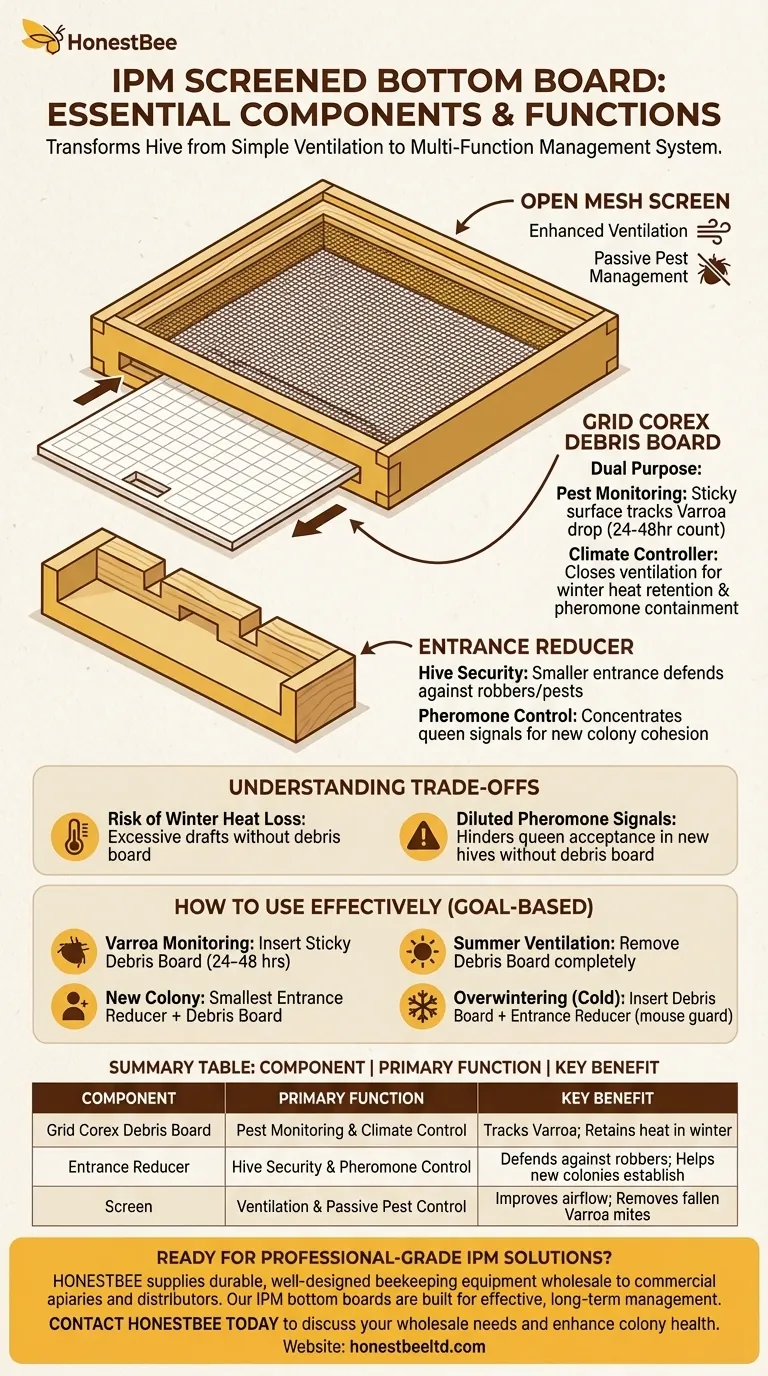
Related Products
- Langstroth Screen Bottom Board for Beekeeping Wholesale
- Australian Pine Wood Langstroth Screen Bottom Board for Wholesale
- HONESTBEE Wooden Bee Escape Board with Triangle Mesh Design for Beekeeping
- Professional Galvanized Hive Strap with Secure Locking Buckle for Beekeeping
- Boardman Entrance Bee Feeder Durable Galvanized Steel and Wood Construction for Beekeeping
People Also Ask
- What are the assembly options for the Cypress Screened Bottom Board? Ready-to-Use for Immediate Hive Health
- What are some considerations when choosing between solid and screened bottom boards? Optimize Hive Health & Pest Control
- What are the advantages of a screened bottom board? Boost Hive Health with Superior Ventilation & Pest Control
- What are the benefits of using a screened bottom board for beehives? Improve Ventilation & Mite Control
- How does a screened bottom board assist with temperature control and pest management? A Key Tool for Modern Beekeeping


